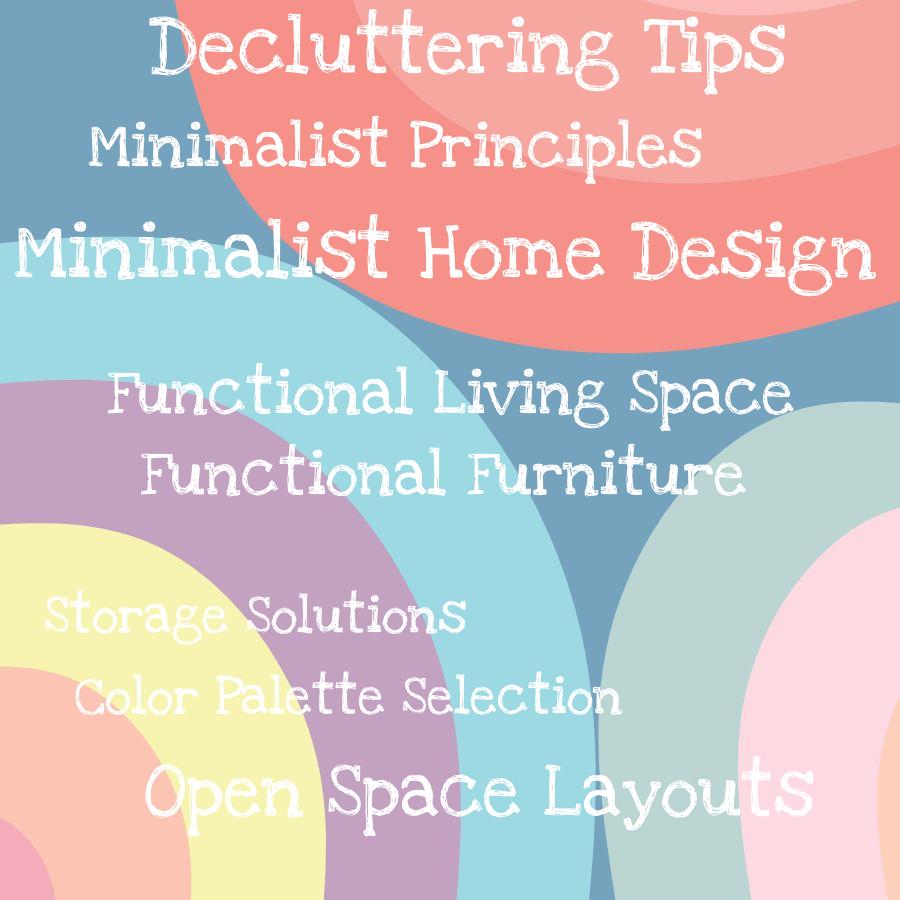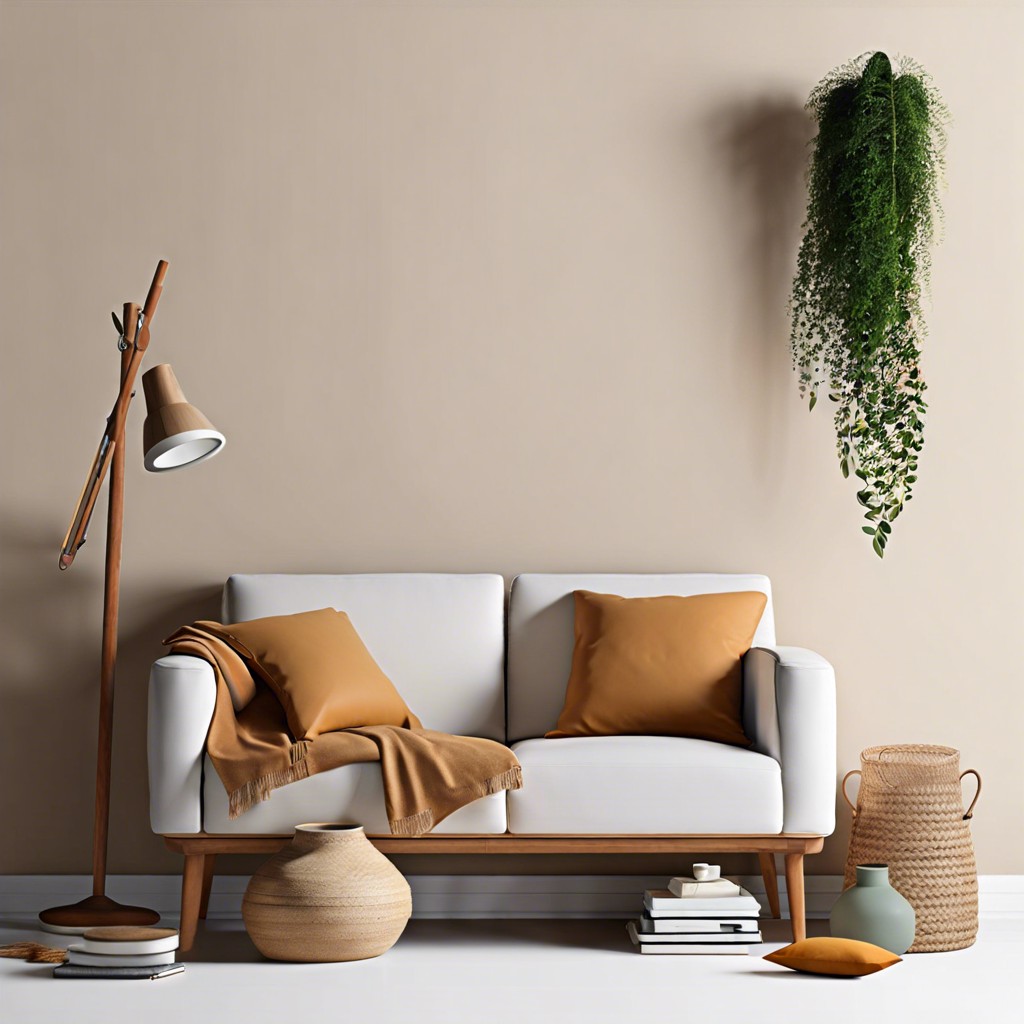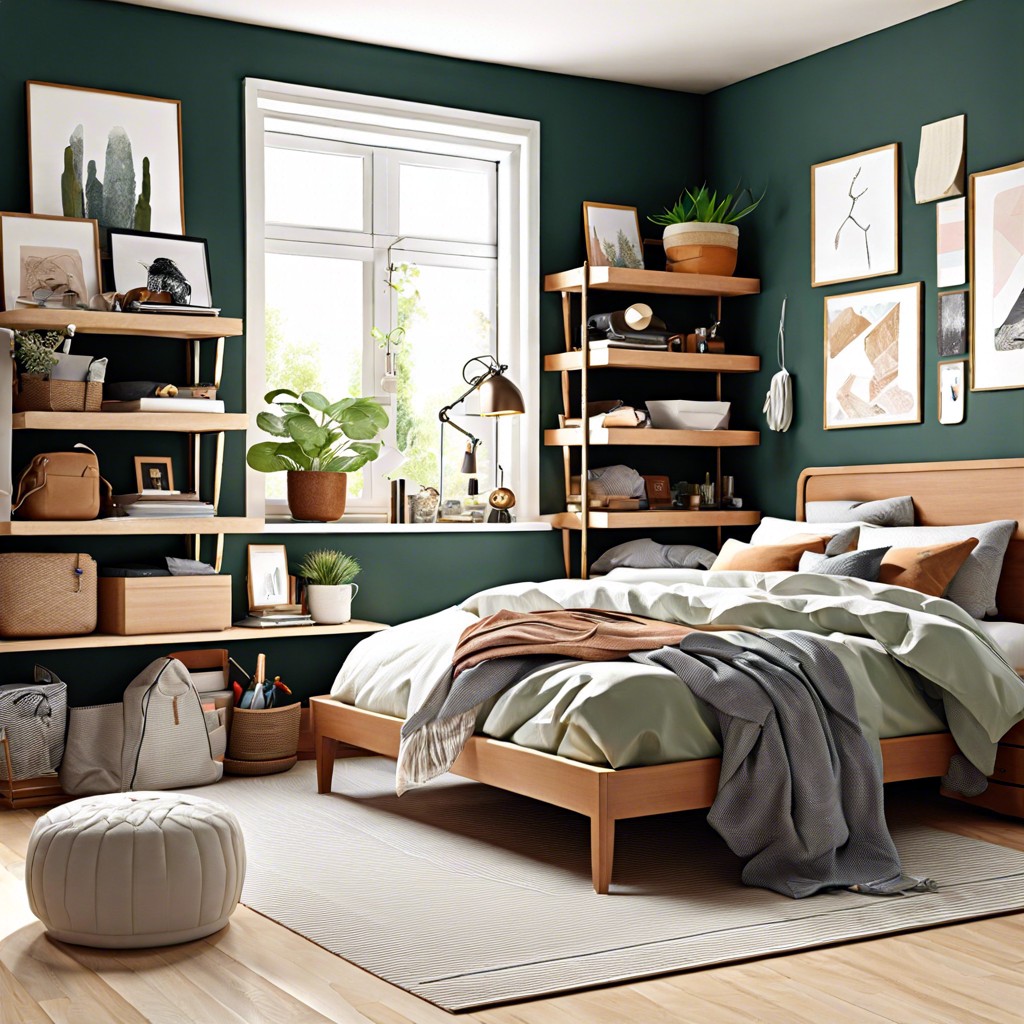In this blog post, I will show you how to design a minimalist home that is both stylish and functional.
As I walked into my friend’s house, I couldn’t help but feel a sense of calm wash over me. Her home was beautifully designed with minimalistic decor and everything had its place.
It was a stark contrast to the cluttered chaos of my own living space. That’s when it hit me – decluttering and organizing isn’t just about tidying up, it’s about creating a peaceful environment that promotes productivity and relaxation.
And so began my journey towards minimalist home design.
In this article, I’ll be sharing with you some expert tips on how to create a stylish and functional living space through minimalism. Whether you’re looking to downsize or simply want to revamp your home decor, these practical tips will help you achieve the perfect balance between aesthetics and functionality.
So sit back, grab a cup of coffee, and let’s dive into the world of minimalist living!
Minimalist Principles

Minimalism is not just a design trend, it’s a lifestyle. It’s about simplifying your life by getting rid of excess and focusing on what truly matters.
When it comes to home design, minimalist principles can help you create a space that is both stylish and functional.
As I delved deeper into the world of minimalism, I realized that there are some key principles to keep in mind when designing your living space. Firstly, focus on quality over quantity – invest in high-quality pieces that will last for years rather than buying cheap items that will need replacing frequently.
Secondly, embrace negative space – don’t feel like every inch of your home needs to be filled with furniture or decor. Leave some breathing room so the eye can rest and appreciate what is there.
Declutter regularly – get rid of anything you no longer need or use regularly as this helps maintain orderliness while also reducing stress levels associated with cluttered spaces.
By incorporating these minimalist principles into my own home design journey; from investing in timeless pieces such as wooden furniture which has lasted me years without losing its charm; embracing negative spaces through open shelving units instead of bulky cabinets; and decluttering often- my living area now feels more spacious yet cozy at the same time!
Decluttering Tips
Now that you’ve decided to embark on the journey towards minimalist home design, it’s time to tackle the first step – decluttering. It can be overwhelming at first, but trust me when I say that it’s worth it in the end.
Not only will you have a cleaner and more organized living space, but studies have shown that decluttering can also reduce stress levels and increase productivity.
To get started with your decluttering process, begin by going through each room one by one. Start with smaller areas like drawers or closets before moving onto larger spaces like your living room or bedroom.
As you go through each item ask yourself if it serves a purpose or brings joy into your life.
If an item doesn’t fit either of those categories then consider donating or selling them instead of holding onto something just because “you might need it someday.” Remember: less is more when creating a minimalist home design.
By following these simple tips for decluttering your home, not only will you create more physical space in which to live comfortably but also mental clarity as well!
Color Palette Selection
One of the first steps towards achieving a minimalist home design is selecting the right color palette. As I began my journey towards minimalism, I realized that my love for bright and bold colors was hindering me from creating a peaceful environment in my living space.
So, I decided to opt for neutral shades like white, beige and grey which not only create an illusion of more space but also promote relaxation.
When selecting your color palette, it’s important to consider how each shade will complement one another as well as any existing furniture or decor you have in your home. You don’t necessarily have to stick with just neutrals – adding pops of muted blues or greens can add depth without overwhelming the senses.
Remember that minimalism isn’t about being boring or dull; it’s about creating a harmonious balance between aesthetics and functionality. By carefully selecting your color palette, you’ll be able to achieve just that!
Functional Furniture
One of the key elements of minimalist home design is functional furniture. As I began my journey towards minimalism, I realized that many of the pieces in my home were simply taking up space without serving a purpose.
So, I started to look for furniture that was not only aesthetically pleasing but also practical.
I invested in a sofa bed which served as both seating and an extra sleeping space for guests. My coffee table had hidden storage compartments where I could store books and magazines, keeping them out of sight when not in use.
And instead of having multiple side tables cluttering up my living room, I opted for one multi-functional piece with built-in shelves.
Not only did these pieces serve their intended purposes well but they also helped me save on precious floor space while maintaining a stylish aesthetic throughout my home.
When it comes to choosing functional furniture for your own minimalist living space, think about what you really need versus what’s just taking up unnecessary room or collecting dust. Invest in quality pieces that will last you years rather than cheap items that will quickly wear out or go out-of-style.
Storage Solutions
One of the biggest challenges I faced when transitioning to a minimalist home design was finding adequate storage solutions. It’s easy to get rid of excess clutter, but where do you put everything that you decide to keep? That’s when I discovered the beauty of multi-functional furniture pieces.
Investing in furniture that doubles as storage is a game-changer for any minimalist home. For example, an ottoman with hidden compartments can serve as both seating and extra storage space for blankets or books.
A bed frame with built-in drawers eliminates the need for bulky dressers and provides ample space for clothing.
Another great option is open shelving units which not only provide additional storage but also add visual interest to your living space by displaying decorative items such as plants or artwork.
By incorporating these clever storage solutions into your minimalist home design, you’ll be able to maintain a clutter-free environment while still having all your essentials within reach – just like my friend did!
Open Space Layouts
One of the key elements of minimalist home design is an open space layout. This means creating a seamless flow between different areas in your living space, such as the kitchen, dining area and living room.
An open floor plan not only makes your home feel more spacious but also promotes social interaction among family members and guests.
As I continued my journey towards minimalism, I realized that my cluttered furniture was hindering the flow of energy in my apartment. So I decided to get rid of some unnecessary pieces and create an open concept layout instead.
By removing walls that separated different rooms, it allowed natural light to flood into every corner while making it easier for me to move around freely.
If you’re considering adopting this style for your own home, start by decluttering any items you no longer need or use regularly – this will help free up valuable floor space! Then think about how each area can be connected visually through color schemes or decor choices like plants or artwork on walls without overcrowding them with too many objects which would defeat its purpose altogether.
Remember: less is always more when it comes to minimalist design!
Lighting Techniques
One of the most important aspects of minimalist home design is lighting. Proper lighting can make a small space feel larger, and it can also set the mood for different activities throughout the day.
As I continued my journey towards minimalism, I realized that my own home was lacking in this department.
To create a stylish and functional living space through minimalism, consider using layered lighting techniques. This involves incorporating multiple light sources at varying heights to create depth and dimension in your room.
Start by installing overhead lights such as pendant lamps or recessed fixtures to provide general illumination. Then add task lights like table lamps or floor lamps for specific activities such as reading or working on a computer.
Incorporate accent lights like wall sconces or candles to highlight architectural features or artwork within your space.
By layering these different types of lighting together, you’ll be able to achieve both functionality and style in your minimalist home design.




